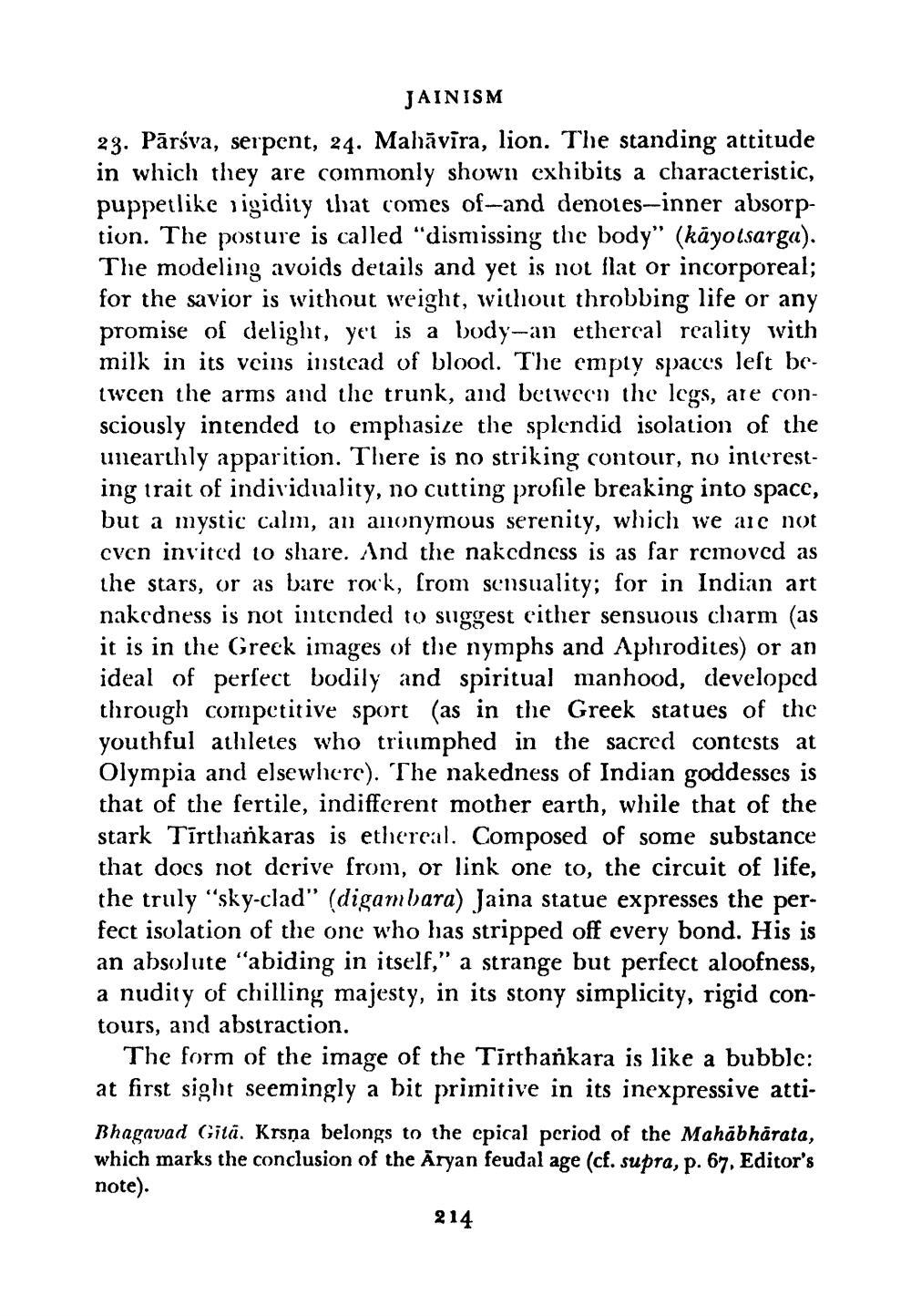________________
JAINISM 23. Pārsva, serpent, 24. Mahāvīra, lion. The standing attitude in which they are commonly shown exhibits a characteristic, puppetlike rigidity that comes of-and denotes-inner absorption. The posture is called "dismissing the body" (kāyotsarga). The modeling avoids details and yet is not flat or incorporeal; for the savior is without weight, without throbbing life or any promise of delight, yet is a body-an ethercal reality with milk in its veins instead of blood. The empty spaces lest between the arms and the trunk, and between the legs, are consciously intended to emphasize the splendid isolation of the unearthly apparition. There is no striking contour, no interesting irait of individuality, no cutting profile breaking into space, but a mystic calm, an anonymous serenity, which we are not cven invited to share. And the nakedness is as far removed as the stars, or as bare rock, from sensuality; for in Indian art nakedness is not intended to suggest either sensuous charm (as it is in the Greck images of the nymphs and Aphrodites) or an ideal of perfect bodily and spiritual manhood, developed through competitive sport (as in the Greek statues of the youthful athletes who triumphed in the sacred contests at Olympia and elsewhere). The nakedness of Indian goddesses is that of the fertile, indifferent mother earth, while that of the stark Tīrthankaras is ethereal. Composed of some substance that does not derive from, or link one to, the circuit of life, the truly “sky-clad" (digambara) Jaina statue expresses the perfect isolation of the one who has stripped off every bond. His is an absolute "abiding in itself,” a strange but perfect aloofness, a nudity of chilling majesty, in its stony simplicity, rigid contours, and abstraction.
The form of the image of the Tirthankara is like a bubble: at first sight seemingly a bit primitive in its inexpressive attiBhagavad Gita. Krsņa belongs to the cpical period of the Mahābharata, which marks the conclusion of the Aryan feudal age (cf. supra, p. 67, Editor's note).
214




